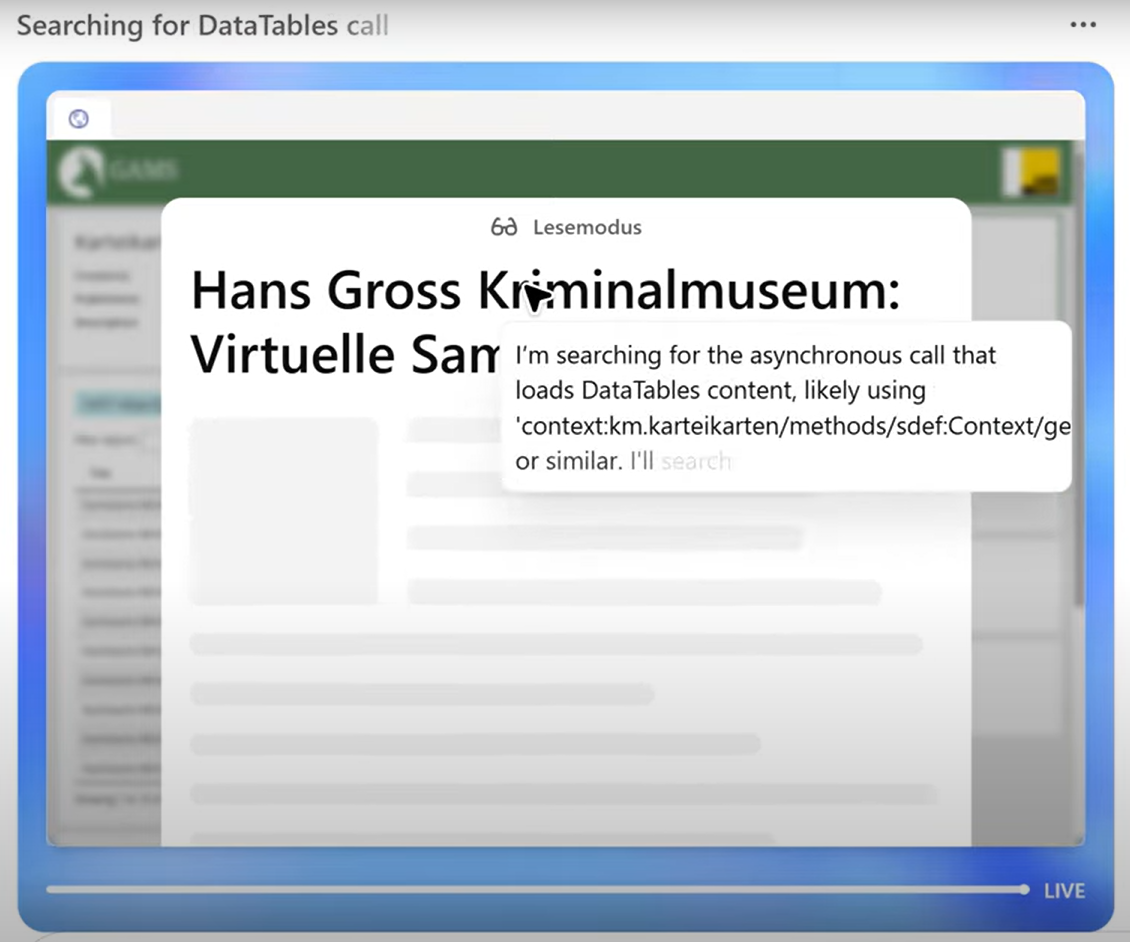Within the framework of the workshop “AI in the Museum”, Christopher Pollin showed how AI agents can be used in museum research work – and how interactive applications can be created from research data.
The starting point was the digitized index cards on the poaching records of the Hans Gross Museum of Criminology, which are accessible via the Virtual Collection of the University Museums. The goal was to develop a web interface that clearly presents these data and at the same time illustrates how Generative AI and Prompt Engineering can be applied in practice.
For this purpose, an AI agent (Claude Opus 4 in combination with ChatGPT) was used, which can open websites, operate in a virtual terminal, and execute code. Step by step, it generated from a precise prompt a working script that transferred all images, metadata, and files from the repository into a clear folder structure — as demonstrated in the Digital Humanities Craft video.
The results show that AI agents are particularly suitable for clearly defined, deterministic tasks when supported by targeted prompt, context, and workflow engineering. At the same time, it becomes clear how valuable the digitally processed collection data of the University Museums are for further scientific research.
